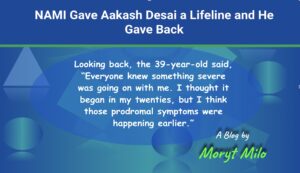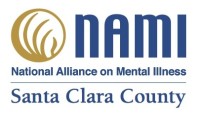 By Moryt Milo
By Moryt Milo
Aakash Desai had a career trajectory similar to other young adults in Silicon Valley. He graduated from high school with an aptitude in computer science and went on to earn a Bachelor of Science degree in computer engineering, followed by an MBA.
For the first ten years of his tech career, he was doing well, until his life “began to fall apart.” Over the next decade, Desai said his diagnosis changed from psychosis depression to schizophrenia.
Looking back, the 39-year-old said, “Everyone knew something severe was going on with me. I thought it began in my twenties, but I think those prodromal symptoms were happening earlier.”
At 18, he went into anaphylactic shock from a nut reaction and was resuscitated. But he recalls back then complaining about memory loss and brain fog.
In his twenties as the disease progressed, he struggled to hold a job, until at age 30, he couldn’t hang on any longer. March 2015 was his last fulltime position.
“I fell into psychosis and the symptoms of schizophrenia became prevalent,” he said.
Desai’s psychosis became so severe he thought nanotechnology had taken over his mind and body.
“It felt like my brain was melting,” he said.
He was admitted to El Camino Hospital in 2016 but left after two days. His parents were worried the food served would trigger severe allergic reactions, after his near-death experience at 18. His parents took over his care. They took the Family-to-Family class and his sister found him a psychiatrist and therapist. Eventually, he landed at Stanford Psychiatry and Behavioral Sciences clinics and the Inspire program.
Desai was lucky to have open-minded, empathic parents who supported him. They understood he had a brain disease. He said that is not always the case in Indian culture.
“One time, a family member said to my father, ‘He is not listening to you guys, you should kick him out of the house,’” Aakash said. “To which my father said, ‘Would you kick your kid with cancer out of the house?’”
His parents asked him multiple times to read the Peer-to-Peer class pamphlet, but at the time he described himself “like a deer in headlights.” Then in 2017, he changed his mind and took the Peer-to-Peer class. It was a game changer.
“I had not been in a room with other people in a long time, and as people began to share their stories it became clearer to me something was wrong,” he said. “I realized the difficulties of the illness, the auditory hallucinations and delusions and all the stuff going on in my head.”
After taking the class and going to the Connections support group, he started volunteering in the NAMI-SCC office, helping with data entry. He said this was critical to his wellbeing. He didn’t feel so alone. It brought him out of isolation and gave him a sense of purpose.
His family is still his safety net, but he lives independently and is on a stable regimen. He has since worked as a research assistant at the Stanford Psychology Department and started his own investment business with a focus on mental health startups.
NAMI gave him a lifeline and he now returns his appreciation through donations for support groups and the helpline where people need immediate help.
“Giving back to NAMI financially after being helped by the nonprofit is good karma,” Desai said.










































